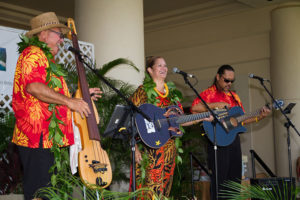Travel back in time over 600 years to the coastal village of Lapakahi, located on the beautiful Kohala coast on the Island of Hawaiʻi.
What was once a thriving fishing community, Lapakahi is now an archaeological site with fascinating ruins preserved to tell a story of Hawaiʻi’s ancient past.
Historic, Self-Guided Walking Tour
Take an easy and informative one mile walking tour through the remains of the coastal village.
There are 23 interpretive displays throughout the walk, describing the people and their cultural story. Once an industrious settlement, what remains are the puzzle pieces of an ancient life with burial and home sites, storage areas, tools and games.
The park has remained much the same since its origin as park staff and archaeologists have preserved and restored many of the sites.
A Life Revolving Around Fishing
Because their way of life revolved around fishing, there is an inlet on the shore, most likely making a convenient area for taking canoes in and out of the water.
Archaeologists also discovered a deep well for providing drinking water and a way to water crops – a necessary requirement for surviving in such a barren and dry environment.
The beautiful landscape didn’t come without its challenges for the many generations of Hawaiians who called Lapakahi home.
Imagine an Ancient Life
Gaze around at the original remains of the lava rock walls and imagine the homes of small thatched huts that once filled the settlement. Close your eyes and you can almost hear the chattering of fisherman and squeals of young children playing within the walls of the village.
Lapakahi Marine Life Conservation District
Lapakahi Marine Life Conservation District lies just offshore from the park and is the perfect place to take in the panoramic ocean views or, during the winter months, look for Humpback whales.
Directions to Lapakahi Historical State Park
Lapakahi State Historical Park is located 11 miles north of Kawaihae and 7 miles south of Hawi on Highway 270.
There is little shade, so it’s best to visit the park in the morning or late afternoon to avoid the heat. Bring your own drinking water as there is none available in the park.
If visiting the northern coast of the Big Island, be sure to include a visit to this rich historical site.
You’ll be glad you did.







